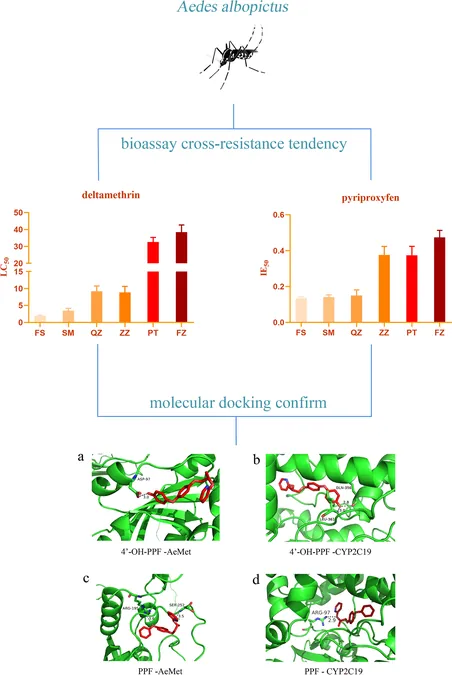
Alarming Rise: Aedes Albopictus Mosquitoes Show Dangerous Resistance to Key Insecticides in Fujian, China!
2024-09-27
Author: Mei
In recent research conducted in Fujian Province, China, scientists have uncovered that Aedes albopictus, also known as the Asian tiger mosquito, is developing alarming resistance levels to deltamethrin and pyriproxyfen (PPF), two crucial insecticides in controlling diseases like dengue fever, Zika virus, and chikungunya. This study highlights a growing public health concern as resistance levels to these insecticides have drastically increased across various regions in Fujian.
The study employed the WHO bioassay protocol to measure resistance in different populations of Aedes albopictus, comparing a susceptible population from Foshan with wild populations from Sanming, Quanzhou, Zhangzhou, Putian, and Fuzhou. Remarkably, most regional populations exhibited significant resistance to deltamethrin—some by over 18 times compared to the sensitive control group. High resistance levels were particularly noted in the Fuzhou and Putian populations, raising red flags about future disease control efforts in these areas.
Genetic analyses revealed non-synonymous mutations in the voltage-gated sodium channel (VGSC) gene associated with knockdown resistance (kdr). These mutations, especially F1534S and F1534L, significantly reduced the effectiveness of deltamethrin against these mosquitoes. The research indicated a concerning correlation between increasing resistance to deltamethrin and PPF, suggesting a trend of cross-resistance that could further complicate vector control strategies.
Molecular docking studies provided additional insights into how PPF and its metabolite 4'-OH-PPF interact with mosquito protein receptors. These findings not only enhance our understanding of the mechanisms driving resistance but also highlight the urgent need for innovative strategies in mosquito management to combat the rising tide of insecticide resistance.
The study serves as a stark reminder of the challenges faced in vector control, amplified by the heightened frequency of dengue outbreaks in Fujian, linked to increased importation of cases and local transmission. As public health officials strive to mitigate these risks, the findings stress the importance of developing new insecticides and resistance management practices to ensure effective control of Aedes albopictus populations.
With Aedes albopictus exhibiting heightened resistance to critical insecticides, urgent measures are needed to address this growing public health threat. If these resistance trends continue, we could face a dramatic rise in vector-borne diseases across China and beyond. What new strategies will be implemented to counteract this resistance, and how will these changes impact disease control efforts? The future of vector control hangs in the balance—stay tuned for groundbreaking developments in this ongoing battle!


 Brasil (PT)
Brasil (PT)
 Canada (EN)
Canada (EN)
 Chile (ES)
Chile (ES)
 España (ES)
España (ES)
 France (FR)
France (FR)
 Hong Kong (EN)
Hong Kong (EN)
 Italia (IT)
Italia (IT)
 日本 (JA)
日本 (JA)
 Magyarország (HU)
Magyarország (HU)
 Norge (NO)
Norge (NO)
 Polska (PL)
Polska (PL)
 Schweiz (DE)
Schweiz (DE)
 Singapore (EN)
Singapore (EN)
 Sverige (SV)
Sverige (SV)
 Suomi (FI)
Suomi (FI)
 Türkiye (TR)
Türkiye (TR)